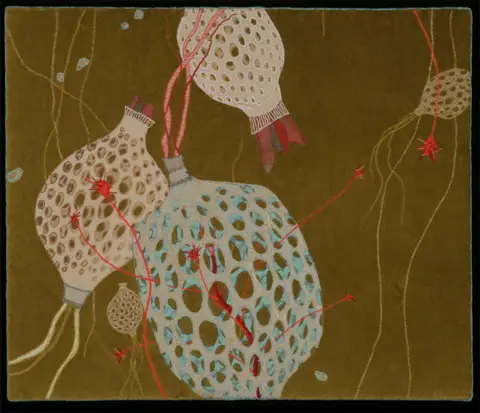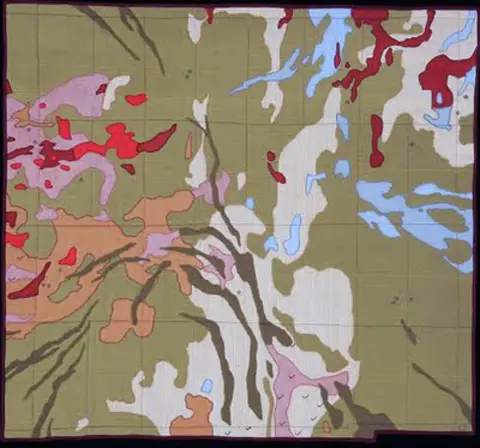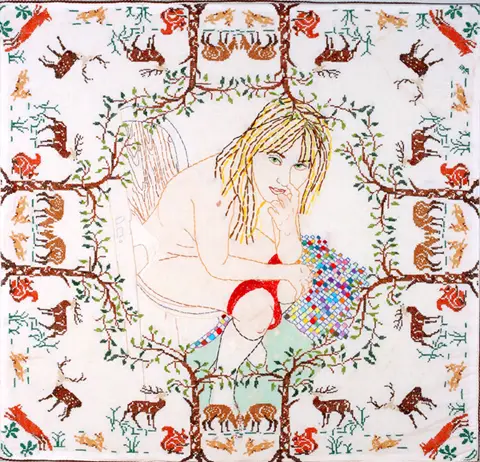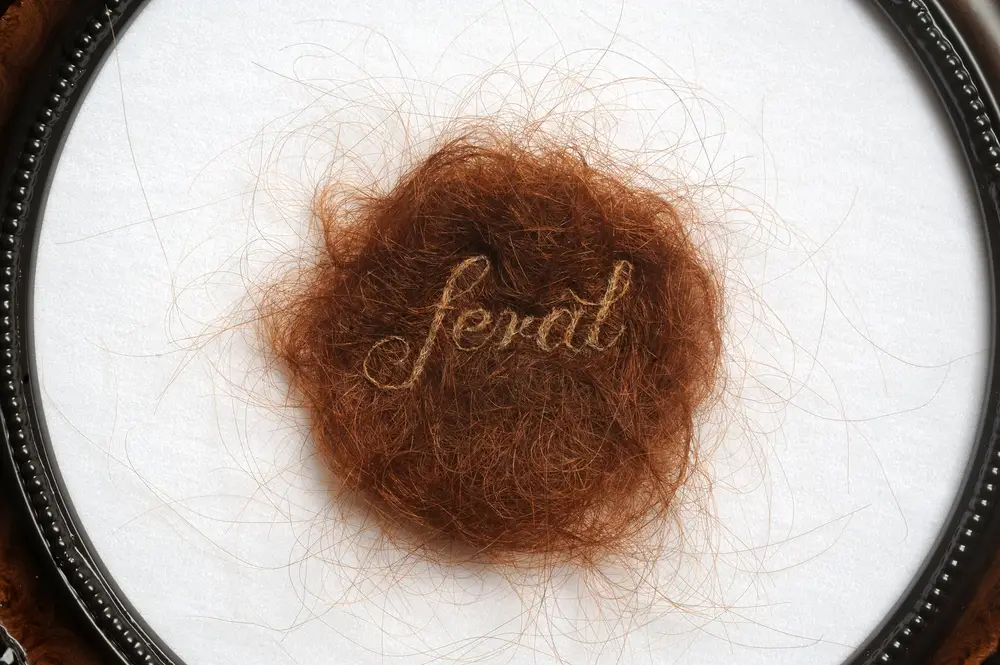Leah Evans is a textile artist from Wisconsin, US. She creates maps:
“My quilted wall hangings consist of layers of the following techniques: applique, reverse applique, piecing, natural and synthetic dyeing, needle-felting, hand printing, and a variety of embroidery stitches. There is an overall balance between hand and machine work. Tools I most often employ include a household-use Kenmore sewing machine, chalk, needles, rulers, compass, staple gun, and scissors. I do not use a computer or any imaging software in my work and I try to use hand tools and processes as opposed to electric.
“My current work combines aerial photography, maps, and satellite imagery. I also find myself drawn to the more minute systems of the microbial world. I enjoy the play in scale between magnified microbial life forms and remote sensing images of huge tracts of land. Both scales deal with the translation of scientific information into a visual form. At times, these separate bodies of work merge. The overlap is seen in vessel-like arteries of water, tundra pools that look cellular, and microbes that swim through topographic lines.
“It is the use of maps in organizing our ideas of land that interests me most of all. Often, people ask me for specifics about the places and symbols in my work. Most of my pieces are not based consciously on specific places. For me they are intimate explorations of map language and imagined landscapes. Through my research and experience, I have decided that maps create more questions than they answer.”
We’ve seen maps appear in textile form before – Liz Kueneke’s community-generated maps are a great example – and it’s always interesting to see textile topography. The change in perspective helps us contextualise our experience, and I can’t help thinking that the production of maps in material form must lead to a greater appreciation for the world we live in.
Leah’s exploration of microbial forms reminds us of the beauty contained within the smallest objects, and I’m interested to see how she draws connections between micro and macro. It’s an interesting concept that is being delivered with great style and technique.
You can find out more about Leah at her website.










